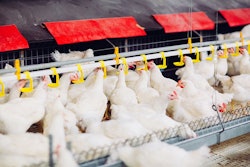
Working with feed additives in the poultry sector is very rewarding due to one key point: “leverage.”
In this context, leverage means that a ridiculously small inclusion of a substance in a tonne of feed - sometimes a couple of hundred grams - can have a positive impact that exceeds its cost by several times. Phytase is a perfect example; an enzyme with a single target, working extremely fast, having a disproportionate positive effect on the bird’s nutrition and the bottom line.
The contribution of feed additives to the industry’s productivity has been significant. As an attractive market has developed, many kinds of substances have been commercialized as feed additives. Some of the stories of additive development are amazing, ranging from pure serendipity captured by a charismatic entrepreneur to decades-long investments by large corporations.
Poultry nutritionists, however, are being overwhelmed by choice. I often hear of the hundreds of additives with a 2% feed conversion effect that are offered. Many nutritionists have found ingenious and pragmatic ways to cope with this variety, becoming more critical and selective, as they should.
Omics and its role
As our understanding of feed additives has advanced, so has science more generally. Developments such as the Human Microbiome Project in 2007 enabled the development of a whole range of techniques that allow the measurement of life’s inner workings. You can measure each part now, from the gene sequence that makes up an animal, to which genes are expressed, which proteins and metabolites are produced and for what function. You can start to understand what you measure and, at some point, you can intervene too.
The disciplines of biology that are trying to understand those pools of biological molecules in organisms and environments such as the gut are referred to as “Omics”, meaning totality of some sort. For example, genomics studies the totality of the genome of organisms. Omics is a large, complex field, but also extraordinarily dynamic.
These techniques have steadily permeated the poultry feed additives world, particularly since their cost has become more accessible and critical mass has built up in animal and veterinary sciences.
Revitalizing feed additives
For poultry producers, omics have two implications with regards to feed additives. The first is that a new generation of precision additives is in the works.
Companies are taking new approaches to apply the new omics knowledge in their new product development. Pick a target, is it a microbe, a metabolite, a pathway, or a function in the bird? It is now possible to select and develop feed additives with the precise effect desired - only a dream a couple decades ago.
The second implication is that methods to understand feed additives and put them together scientifically in a feeding program are being developed. If you can measure every single element that is changing in the gut and the birds when you put feed additives in the ration and you understand the problem that you are trying to solve, then you can decide if you need product “x” or a combination of “x”, “y” and “z”. It’s easier said than done, but practical applications of such concepts are starting to be used as we speak.
If those two trends materialize, they will revitalize feed additives, but also change the dynamics of the poultry nutrition and health industry. Evidence will filter the feed additives with the best “leverage” to solve producer problems.
















